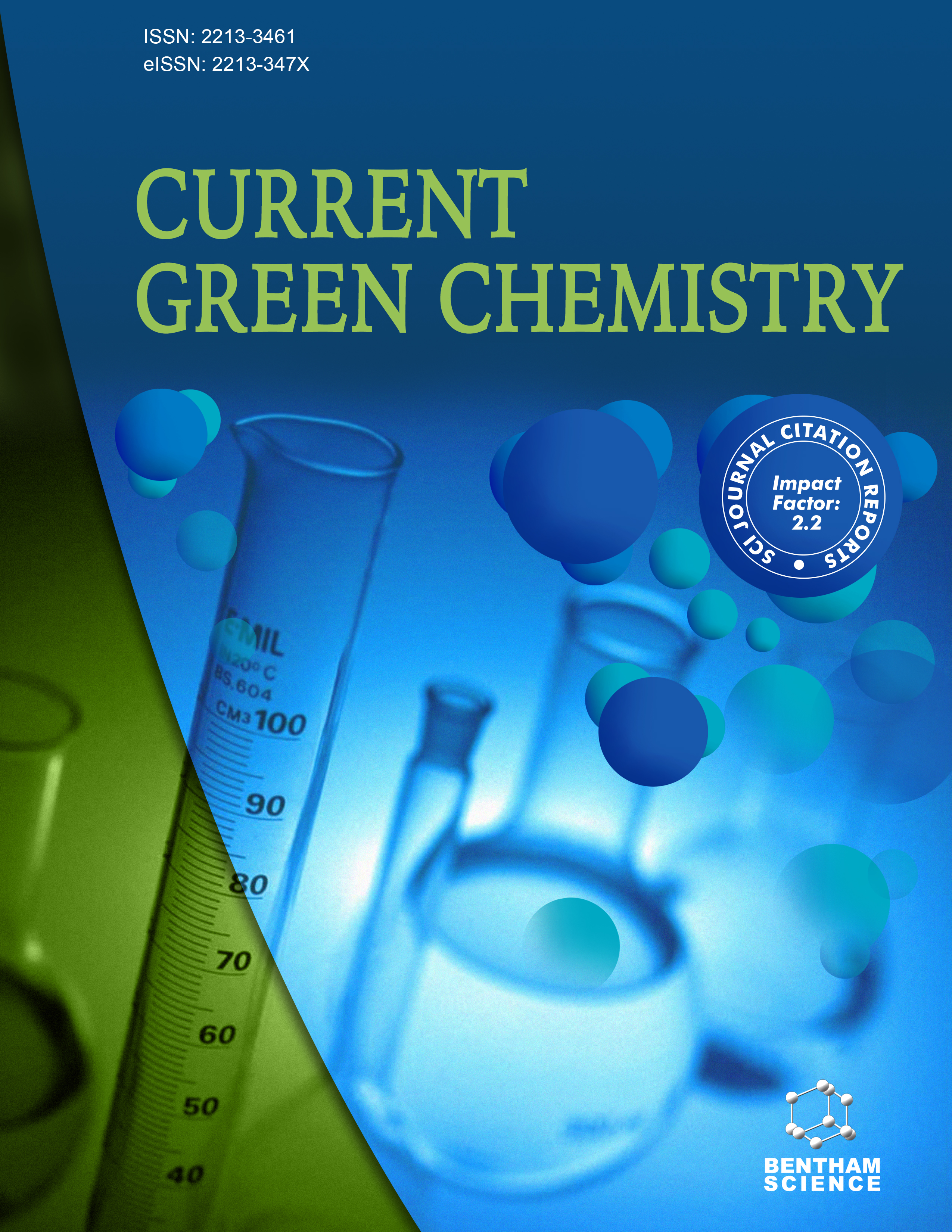- Home
- A-Z Publications
- Current Green Chemistry
- Previous Issues
- Volume 9, Issue 3, 2022
Current Green Chemistry - Volume 9, Issue 3, 2022
Volume 9, Issue 3, 2022
-
-
Visible Light-promoted Synthesis of Bioactive N, N-heterocycles
More LessAuthors: Sasadhar Majhi and Ipsita SahaHeterocycles are a valuable type of structural motifs which occupy a major space in the area of medicinal, pharmaceutical, and bioactive natural product chemistry as well as synthetic organic chemistry. Most frequently, nitrogen heterocycles represent a highly significant type of compounds that are extensively employed in agrochemistry, materials science, and synthesis of bioactive complex molecules and it also has a profo Read More
-
-
-
Microwave-assisted Synthesis of Fluorinated Heterocycles
More LessAuthors: Chandra Prakash and Ram SinghThe diverse biological applications of fluorinated heterocycles make them crucial chemical compounds. Several synthetic processes have been developed for their synthesis. Microwave-assisted synthesis has emerged as an important technique for generating fluorinated heterocycles in an ecofriendly and energy-efficient manner. It provides several benefits like less reaction time, high reaction yield, homogeneous heat distri Read More
-
-
-
Glycine Catalyzed One-Pot Three-Component Synthesis of Structurally Diverse 2-Amino Substituted Pyran Annulated Heterocycles in Aqueous Ethanol under Refluxed Conditions
More LessAuthors: Bubun Banerjee, Manmeet Kaur, Aditi Sharma, Arvind Singh, Anu Priya, Vivek K. Gupta and Vikas JaitakIntroduction: A facile, convenient and general method has been developed for the one-pot three-component synthesis of structurally diverse 2-amino pyran annulated heterocycles from the reactions of aromatic aldehydes, malononitrile and various C-H activated acids in the presence of a catalytic amount of glycine as an efficient metal-free organocatalyst in aqueous ethanol under refluxed conditions. Methods: Using this d Read More
-
-
-
A Review on Green Synthesis of Biologically Active Compounds
More LessAuthors: Smriti Kushwaha, Jyoti Baranwal, Swastika Singh and Archana JyotiIn recent decades, green synthesis is increasingly being employed for more environmentally friendly processes and constitutes one central theme of research and development in both academic and industrial chemistry. “Green Chemistry” refers to the design of products and processes that imply the reduction or elimination of substances that are harmful to life or the environment. Due to the benefits of green synthesis, such Read More
-
Most Read This Month
Article
content/journals/cgc
Journal
10
5
false
en


